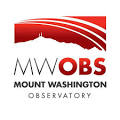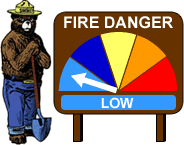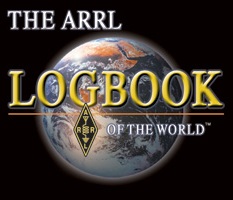GOES Electron Flux Page

This electron flux plot contains the 5-minute averaged integral electron flux (electrons/cm2-s-sr) with energies greater than or equal to 0.8 MeV and greater than or equal to 2 MeV at GOES-13 (W75). This data is invalid during a significant proton event because of sensor contamination at the GOES spacecraft. Enhanced fluxes of electrons for an extended period of time have been associated with deep dielectric charging anomalies.
Noon and midnight local time at the satellites are plotted as N and M.
Electron Flux Alert
|
ALERT: Electron 2MeV Integral Flux exceeded 1000pfu |
Electron Events can persist for days, but the flux values observed at geosynchronous orbit follow a strong diurnal cycle due to the geometry of the Earth's magnetic field. Maximum values generally occur near local noon locations on the daytime side of the Earth. ALERTS for Electron Events are therefore issued once per "satellite day" based on data from SWPC's primary GOES satellite, when electron fluxes have exceeded the event threshold (1000 pfu). The "satellite day" for GOES East, SWPC's current primary Electron satellite, is approximately 0500 to 0500 UTC; for GOES West, the secondary GOES Electron satellite, its approximately 0900 to 0900 UTC. On subsequent "days", an additional Electron ALERT is issued upon a new threshold crossing, and include the prior day's maximum flux time and value observed (if it occurred). No Electron ALERTS are issued on "days" when the threshold is not exceeded. As with any Electron Event, users should consider the locations of the satellite platforms of interest vs. the location of GOES, with regard to the specific timing of enhanced electron exposures that may occur. GOES East satellites are at approximates 75 degrees west longitude and GOES West at approximately 135 degrees west longitude. The satellite used is identified in the "Station" keyword.
Proton 10MeV and 100 MeV Warnings, Event Alerts, and Event Summaries
|
WARNING: Proton 10MeV Integral Flux above 10pfu expected |
Extended Warning |
| ALERT: Proton Event 10MeV Integral
Flux exceeded 10pfu ALERT: Proton Event 10MeV Integral Flux exceeded 100pfu ALERT: Proton Event 10MeV Integral Flux exceeded 1000pfu ALERT: Proton Event 10MeV Integral Flux exceeded 10000pfu ALERT: Proton Event 10MeV Integral Flux exceeded 100000pfu |
|
| SUMMARY: Proton Event 10MeV Integral
Flux exceeded 10pfu SUMMARY: Proton Event 10MeV Integral Flux exceeded 100pfu SUMMARY: Proton Event 10MeV Integral Flux exceeded 1000pfu SUMMARY: Proton Event 10MeV Integral Flux exceeded 10000pfu SUMMARY: Proton Event 10MeV Integral Flux exceeded 100000pfu |
- 10 MeV Warning: Issued when flux levels above 10 pfu are predicted. The predicted level of activity is given in the NOAA Space Weather Scale categories.
- 10 MeV ALERTS: Issued when flux level exceeding 10, 100, 1,000, 10,000, or 100,000 pfu confirmed.
- 10 MeV Proton Event SUMMARY: Issued when 10 MeV flux levels make a confirmed drop below S—Scale thresholds. Includes date/times for begin, maximum, end, and applicable flux data.
- The appropriate NOAA Space Weather Scale will be included on 10 MeV warning, alert and summary messages.
|
WARNING: Proton 100MeV Integral Flux above 1pfu expected |
Extended Warning |
|
ALERT: Proton Event 100MeV Integral Flux exceeded 1pfu |
|
|
SUMMARY: Proton Event 100MeV Integral Flux exceeded 1pfu |
- 100 MeV Flux ALERT: Issued when flux level exceeding 1 pfu confirmed.
- 100 MeV Proton Event SUMMARY: Issued when 100 MeV flux level makes confirmed drop below 1 pfu threshold. Includes date/times for begin, maximum, end, and applicable flux data.
Proton Event products are issued for several thresholds. The 10 MeV products match the NOAA Solar Radiation Storm (S-scale) thresholds, based upon values observed on the primary GOES satellite.
Proton Event WARNINGS are issued by SWPC under two conditions: Warning of expected ONSET of a Proton Event, and/or, warning of expected PERSISTENCE of a Proton Event.
The 10 MeV Integral Flux WARNING (and EXTENDED WARNING, when required) is issued based upon the expectation of exceeding flux levels above 10 pfu. The same applies for the 100 MeV Integral Flux WARNING, though for a threshold of 1 pfu. Proton Event WARNINGS include a specific indication of what condition - Onset or Persistence - applies to the WARNING (or EXTENDED WARNING, when required). The WARNING period is expressed in terms of "Valid From" and "Valid To" times. EXTENDED WARNINGS always have the same "Valid From" time as the original WARNING, with a revised "Now Valid Until" time specified in the message. The 10 MeV Integral Flux WARNING includes the predicted level of activity based on the NOAA S-scale.
Proton Event ALERTS are issued upon confirmation of 10 Mev or 100 MeV Integral Flux exceeding certain thresholds. Initial ALERTS for 10 MeV and 100 MeV are issued for integral flux exceeding 10 pfu and 1 pfu, respectively. Higher threshold 10 MeV ALERTS are also issued for threshold exceedences of 100, 1,000, 10,000, and 100,000 pfu, matching the thresholds described in the NOAA S-scale.
Once the Proton Flux has made a confirmed drop below a given threshold, a Proton Event SUMMARY is issued, specifying the start, maximum, end times, maximum flux observed for the event, and the corresponding NOAA S-scale. Because flux levels can drop slowly, the time of a "confirmed" drop below threshold can sometimes take several hours to determine.
Higher threshold products for 100 MeV flux levels, such as 100 pfu, are being considered for future implementation.
| NOAA Scale for Solar Radiation Storms |
Proton 10 MeV Integral Flux exceeds |
|
|
|
|
|
|
|
|
|
|



 Mt Washington Wx CAM
Mt Washington Wx CAM






